#growing herbs
Explore tagged Tumblr posts
Text
Growing Tip: Garden Rosemary

Growing your own Rosemary (Salvia rosmarinus), you can really tell the difference, even with a plant you brought home from the garden centre! Its leaves are fatter, more fragrant, and the flavour is uncomparable! Like any herb you grow yourself, it is so tasty and powerfully scented that a little really does go a long way!
And the good news is, it is rather easy to grow, as well. One mostly need to be patient and very attentive to the weather!
I sowed rosemary seeds sparsely in a terracotta pot filled with a mixture of garden soil, potting soil and compost on top of clay marbles --good drainage is essential-- on 28th June (my birthday!)
Then, I watered regularly, but only when the soil was dry to the touch.
It took quite a while to sprout, in late July, early August, but once it did, it grew rather nicely, and by mid-August, I could snip off some of these soft, tender tops to cook with! This actually helps, and encourages the plant to grow further, sturdier and stronger. Don't hesitate, but be careful to cut just over the tiniest, youngest leaves, so they can continue to flourish and your Rosemary plant with it!
Tending to it is quite easy: water, generously, when the soil gets dry to the touch, make sure your plant gets a lot of light; and, when it rains abundantly, make sure the water does not flood your pot, as the Rosemary roots can rot if over-watered.)
I shall take my young Rosemary plant inside, to the Nursery, under a window, once it gets both wetter and colder (older plants may sustain the weather if planted in a well-drained area), but as long as there are sunny and warm days, it continues to thrive on the Herb Shelf, and bring heaps of delicious flavours to my dishes!
#Growing#Growing Tip#Growing Tips#Rosemary#Garden Rosmary#Growing Rosemary#Salvia rosmarinus#Rosmarinus officinalis#Herbs#Fresh Herbs#Garden Herbs#Growing Herbs#Growing Garden Herbs#Herb Shelf#Kitchen Garden#Gardening#Gardening Tip#Gardening Tips#Growing Food
12 notes
·
View notes
Text
Okay experts, riddle me this: my lavender plants smell like cinnamon. I realize there are different types, and I'm not sure which type they are, but when I cut them and bring them into dry, they don't smell like lavender, but cinnamon. I got some others, which slowly died indoors, they came from a different source, and also had a herbal cinnamon smell. The outside ones are doing fine, the inside ones died, both cinnamon.
I want some lavender that smell like lavender, is it down to type? Did I somehow end up with the cinnamony versions? I also, for some reason, have bad luck growing them specifically, so it's a wonder my outdoor ones are doing so well, but I can't figure out where I'm going wrong, and if the smell is something I'm doing. Please halp.
#plantblr#gardenblr#gardening#lavender#gardening help#herbs#plants and herbs#growing herbs#growing lavender
32 notes
·
View notes
Video
youtube
🍃 Basil Bliss: Start Seeds in Containers! 🍃 Join us for an exciting journey into herb gardening! In this video, we'll guide you through the process of starting basil seeds in containers, ensuring you have fresh basil ready for your next dish. Basil is not only delicious, but also incredibly versatile, making it a must-have in any kitchen garden. With our easy-to-follow instructions and expert tips, you'll be well on your way to growing a thriving basil garden in no time! 🍝🌱
#youtube#video#videos#youtube video#youtube views#basil#gardening#garden#gardenblr#gardencore#gardeningtip#container#container gardening#herb#herbs#growing herbs#howto#how to video
4 notes
·
View notes
Text
A Beginner's Guide to Growing Herbs Indoors: Tips for Thriving Indoor Herb Gardens
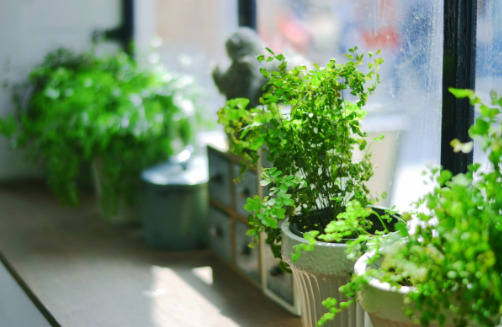
For those who have never grown herbs before, cultivating them indoors can be a delightful and fragrant experience. Growing an indoor herb garden is a wonderful and doable hobby, regardless of your interest in cooking or just the convenience of having fresh herbs on hand. This in-depth guide will show you how to successfully grow your very own indoor herb garden..
Choosing the Right Herbs: Start by selecting herbs that are well-suited for indoor cultivation. Popular choices include basil, mint, rosemary, thyme, and parsley. Choose herbs that share similar growing requirements to simplify maintenance.
Selecting the Right Containers: Choosing the right containers is crucial for successful indoor herb gardening. Ensure that your pots have adequate drainage holes to prevent waterlogging. Additionally, consider the size of the pots, allowing ample space for root growth.
The Perfect Potting Mix: Herbs thrive in well-draining soil. Create a suitable potting mix by combining regular potting soil with perlite or coarse sand to enhance drainage. This ensures that your herbs receive the right balance of water and air.
Providing Adequate Light: Indoor herbs require plenty of sunlight to thrive. Place your herb garden near a south-facing window where they can receive at least 6-8 hours of sunlight daily. If natural light is scarce, consider supplementing with fluorescent grow lights.
Watering Wisely: Overwatering is a common mistake in herb gardening. Allow the topsoil to dry out slightly before watering. When watering, do so thoroughly, ensuring the water reaches the roots. Always use a saucer under the pots to catch excess water and prevent water damage.
Temperature and Humidity: Most herbs prefer temperatures between 60-70°F (15-21°C). Ensure the indoor environment remains well-ventilated, as stagnant air can lead to problems like mold. Humidity levels between 40-60% are generally suitable for herb cultivation.
Fertilizing Routine: Herbs benefit from periodic feeding during the growing season. Use a balanced, water-soluble fertilizer every 4-6 weeks. Be cautious not to over-fertilize, as this can harm the plants.
Pruning and Harvesting: Regular pruning encourages bushier growth and prevents herbs from becoming leggy, or similarly, elongated or stretched. Harvest leaves in the morning when the essential oils are most concentrated. Avoid removing more than one-third of the plant at a time to ensure continued growth.
Dealing with Common Pests: Keep an eye out for common pests like aphids and spider mites. A mild solution of water and dish soap can help control these pests. Alternatively, introduce beneficial insects like ladybugs to keep your indoor garden pest-free.
In closing, embarking on the journey of growing herbs indoors is a delightful adventure for beginners. By choosing the right herbs, containers, soil, and providing the optimal growing conditions, you'll soon be enjoying the bountiful harvest of your indoor herb garden. Follow these tips, stay patient, and watch as your herbs flourish, bringing a touch of freshness to your culinary endeavors. Happy herb gardening!
#botany#garden#gardening#horticulture#how to#life hacks#planting#plants#tips and tricks#Indoor Herb Garden#Culinary Herbs#growing herbs#home gardening#container gardening#gardening tips#seeds#vegetable gardening#urban gardening#Beginner Gardening#organic herbs#Sustainable Gardening#Kitchen Herb Garden#Herb Planting#herbalism#Herb Care#Gardening Tips#indoor plants#house plants#potted plants#DIY Herb Garden
3 notes
·
View notes
Text
Unlock Nature's Flavors: A Quick and Easy Guide to Cultivating Your Own Herb Garden within 20 Seconds
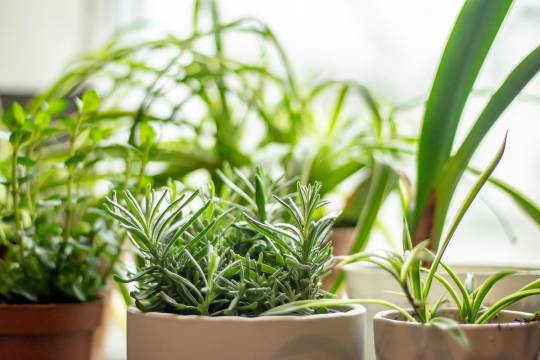
Discover how to transform your culinary creations with the ultimate guide to growing herbs at home. This comprehensive, easy-to-follow guide is perfect for beginners looking to go green by growing their own herbs. You'll be amazed at the simplicity and rewards of growing herbs, enhancing your meals with fresh, organic seasonings. Enter a world of irresistible flavours and aromas as we walk you through the basics, from choosing the right plants to harvesting and preserving. With just a little time and patience, you can create your own herb garden, nurturing it from seedlings to sumptuous garnishes. So if you've ever wondered how to unlock the secret of herb gardening, keep reading to let your tastebuds - and your garden - flourish. I've always dreamed of having my own herb garden, but the thought of it seemed overwhelming. Where do I start? How do I keep them alive? Well, thanks to this handy article called The 20 Second Guide To Growing Your Own Herbs, I now have all the answers I need. First things first, **choose the right herbs**. Start with ones that are easy to grow, like basil, mint, and rosemary. These herbs are hardy and forgiving, perfect for beginners like me. Plus, they add so much flavor to our meals! Next, **find a sunny spot** for your herb garden. Herbs love sunlight, so make sure they get at least 6 hours of direct sunlight every day. If you have limited space, don't worry! You can grow herbs in pots on your balcony or windowsill. Once you've picked the herbs and found the perfect spot, it's time to **prepare the soil**. Herbs prefer well-draining soil, so mix in some organic matter like compost to improve its texture. This will give your herbs the nutrients they need to thrive. When it comes to **watering**, the key is to find the right balance. Overwatering can lead to root rot, while underwatering can cause your herbs to wither. The best way to check if your herbs need water is to stick your finger about an inch into the soil. If it feels dry, it's time to water them. Now, let's talk about **harvesting**. Harvesting herbs is one of the most rewarding parts of having your own garden. When your herbs are about 6 inches tall, you can start picking the leaves. Just remember to **trim the stems above a set of leaves** to encourage healthy growth. To keep your herbs healthy and bushy, **pinch off the flowers** as soon as you see them. This will prevent the herbs from going to seed and ensure that they continue producing delicious leaves for you to enjoy. Finally, **don't be afraid to experiment** in the kitchen. Cooking with fresh herbs can take your meals to a whole new level. Try adding a handful of chopped basil to your pasta sauce or some fresh cilantro to your homemade guacamole. The possibilities are endless! In conclusion, growing your own herbs may seem daunting at first, but with the right knowledge and a little bit of care, anyone can do it. So go ahead, start your own herb garden and enjoy the satisfaction of using herbs you grew yourself in your culinary creations. Trust me, there's nothing quite like it. *Happy gardening!* **Insightful Quote:** The secret to a successful herb garden lies in choosing the right herbs, providing them with ample sunlight, well-draining soil, and watering them just enough to keep them happy. With a little bit of care and experimentation, you'll have a flourishing herb garden in no time. Learn more about gardening with Taim.io!
2 notes
·
View notes
Text
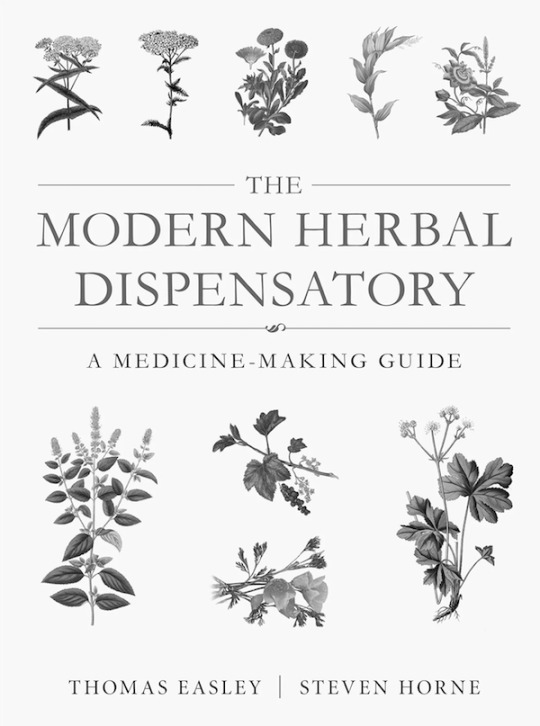
Currently Reading
Thomas Easley and Steven Horne THE MODERN HERBAL DISPENSATORY A Medicine-Making Guide
4 notes
·
View notes
Text
Lemon Thyme: A Journey Through Fragrant History and Gardening Triumphs.
Welcome to the world of Lemon thyme, where fragrance dances on the breeze and culinary adventures await. Unearth the history, unravel the secrets of successful cultivation, and unlock the magic of Lemon thyme. From soil secrets to sunlight desires, wateri
Picture yourself in a vibrant garden, the air filled with the invigorating aroma of fresh herbs. Among them stands an unsung hero—a petite yet potent herb known as Lemon thyme. With its delicate leaves and captivating fragrance, Lemon thyme has woven its way into the hearts and gardens of herb enthusiasts around the world. In this blog post, we embark on a journey through the enchanting world of…
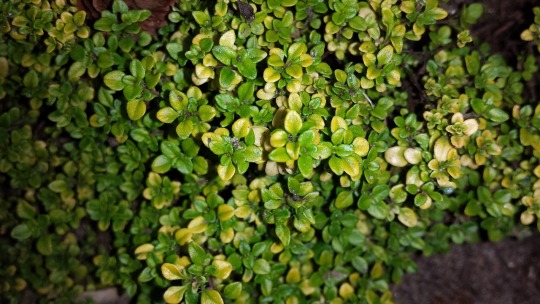
View On WordPress
#Aromatic plants#companion planting#Culinary herbs#disease prevention#Fertilizer for herbs#Fragrant herbs#garden tips#gardening advice#Gardening Challenges#gardening techniques#Growing herbs#Harvesting herbs#Herb care#Herb cultivation#Herb enthusiasts#Herb garden design#Herb gardening#Herb history#Herb lovers#Herb recipes#Herb storage#Homegrown herbs.#Lemon thyme#Organic herbs#pest control#Propagation methods#soil quality#sunlight requirements#sustainable gardening#Watering Tips
3 notes
·
View notes
Photo
Food Blog
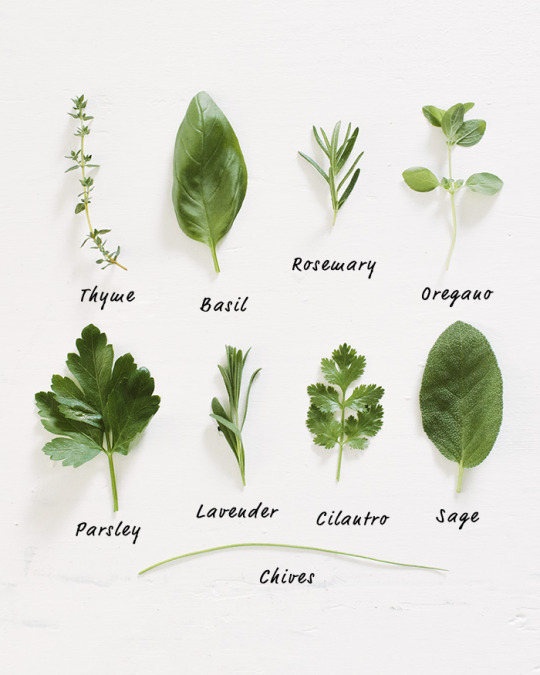
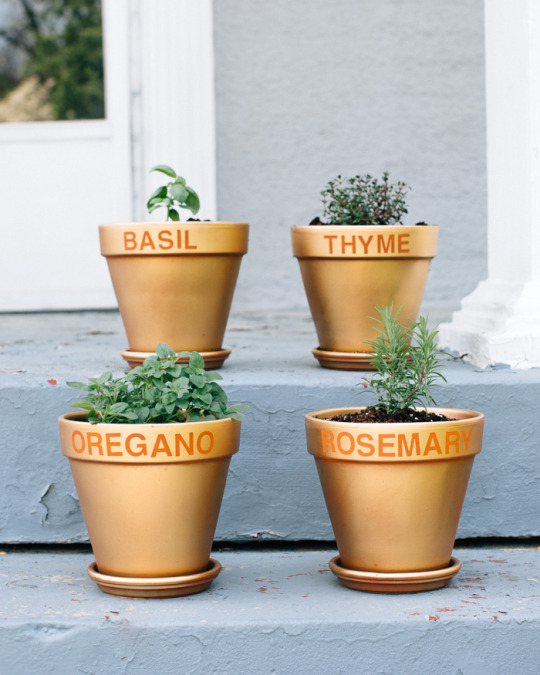
#how to#grow herbs#growing herbs#herbs in pots#acouplecooks#food#health & fitness#health#healthy snack#fruit
11K notes
·
View notes
Text
Exploring Artemisia absinthium: Unraveling the Mysteries of Wormwood
Hello! Discover the wonders of Artemisia absinthium, commonly known as wormwood. Learn about its history, uses, and benefits in this comprehensive guide.
Discover the wonders of Artemisia absinthium, commonly known as wormwood. Learn about its history, uses, and benefits in this comprehensive guide. Introduction Artemisia absinthium, often referred to simply as wormwood, is a plant steeped in history and intrigue. From its medicinal uses dating back centuries to its association with the infamous spirit absinthe, wormwood continues to fascinate…

View On WordPress
#Artemisia absinthium#digestive aid#growing herbs#health benefits#herbs#pain relief#traditional Chinese medicine#wormwood
0 notes
Text
Skip the Soil, Sprout the Joy: Discover the Magic of Growing Herbs in Water
The aroma of takeout filled our tiny Brooklyn apartment. Sarah, juggling takeout boxes with a weary sigh, met my eyes. "Remember how we talked about fresh herbs?" she asked, eyebrows raised hopefully.
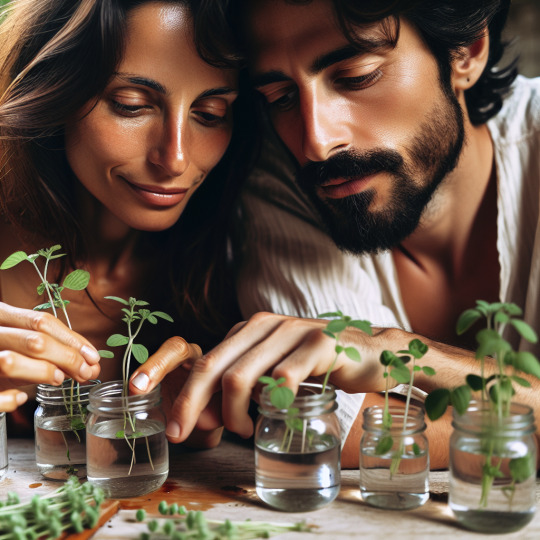
I grinned. "Absolutely! But with our busy schedules and limited space, soil and pots felt daunting."
That's when the idea struck – growing herbs in water! We dove headfirst into research, unearthing a world of possibilities. Basil for pasta, mint for mojitos, oregano for pizza – all flourishing without a speck of dirt.
Seeds of Success:
Our first hurdle? Choosing the right herbs. We learned that Basil, mint, and oregano were champions in water. We opted for store-bought herbs, carefully selecting healthy stems with vibrant leaves.
Pro Tip: Look for herbs with thick, sturdy stems. Remove the lower leaves to prevent rot in the water.
The Crystal Clear Canvas:
Instead of bulky pots, we chose sleek glass containers, allowing us to admire the roots as they sprouted. Distilled water, free of minerals that could harm the plants, became their lifeblood.
Pro Tip: Opt for containers with narrow openings to prevent leaves from falling in and contaminating the water.
Sunlight Serenade:
Our sunny windowsill became the perfect stage. We learned that herbs crave at least 6 hours of sunlight daily, mimicking their natural outdoor habitat.
Pro Tip: Rotate your water gardens regularly for even growth and prevent them from leaning towards the light.
The Green Thumb Tango:
Patience became our mantra. We watched in fascination as tiny white roots emerged, slowly morphing into intricate networks. Within weeks, lush green leaves unfurled, reaching for the sun.
Pro Tip: Change the water every 7-10 days to prevent algae growth and replenish nutrients. Snip off any yellowing or wilting leaves to promote healthy growth.
The Flavorful Finale:
The first snip of basil for homemade pasta was a revelation. The aroma, so much brighter than store-bought, filled our kitchen with the promise of fresh, vibrant meals. Mint mojitos on the balcony became our weekend ritual; each sip was a testament to our tiny, thriving ecosystem.
Key Benefits Beyond Flavor:
Growing herbs in water wasn't just about delicious food. It was about:
Effortless maintenance: No more messy repotting or battling fungus gnats.
Year-round enjoyment: Fresh herbs, even during winter months.
Sustainable living: Less waste, more green goodness.
A shared passion: A fun activity that brought us closer together.
Our tiny Brooklyn kitchen had transformed into a haven of vibrant green, filled with the promise of culinary adventures. And as we snipped our homegrown herbs, we knew this wasn't just about flavor; it was about the joy of growing, the satisfaction of nurturing life, and the delicious reminder that even in the heart of a bustling city, a little piece of nature could thrive.
So, ditch the dirt, embrace the water, and unlock a world of fresh flavors and mindful moments in your own kitchen!
0 notes
Text
Kitchen Garden Plan For 2024 (Part I)
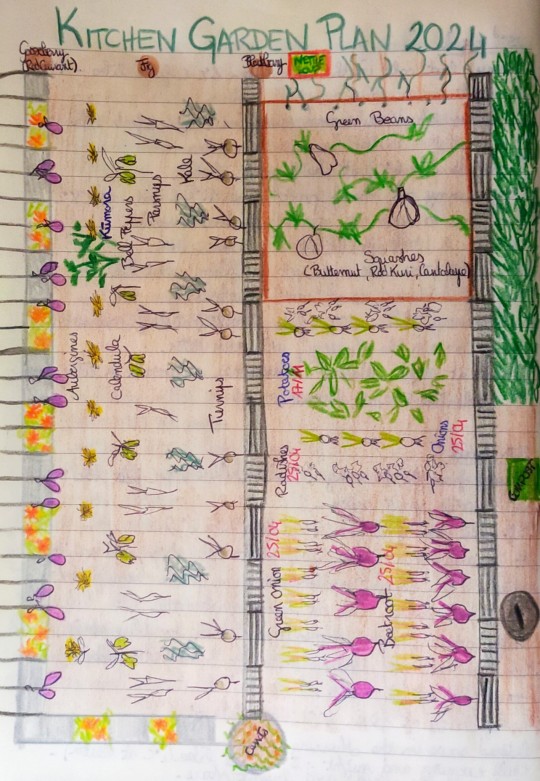
Here is my Kitchen Garden Plan For 2024! As usual, I started dreaming about it since Mid-Winter!
I actually planted the overgrown, sprouted potatoes much earlier this time, in November! I was so chuffed with the delicious Potato Harvest I had last year, I could not wait to repeat the experiment. And now, in late April, there is a beautifully green and leafy patch in the Lasagna Garden [(Update One) (Update Two) (Update Three) (Update Four)], almost ready for a New Potato harvest!
On late Winter days, when the weather held, I worked a bit on the Veg Patch Extension, tilling. I've been away in New Zealand for most of March, but since returning on the 1st of April, I've generously fed it compost, wood ashes and Leaf Mould. And appropriately, there is a kūmara (sweet potato) growing in the middle of it! Kūmara, which the first Māori who settled in Aotearoa (New Zealand) had brought from their Polynesian Islands and successfully grown in a very different climate is historically and culturally important to Māori iwi, as well as being delicious!
I remain as ambitious as ever, and have decided to try growing courgettes, and more varieties of tomatoes (Marmande and Pineapple). Whilst last year's purple Beans were a resounding success, the aubergines were not! I have thus sowed them inside, and shall plant their seedlings in a sunnier spot alongside Marigolds and calendula to repel aphids and other pests, and to attract bees and pollinators and make the Patch look pretty!
I have sowed a bunch of other seeds inside this month, in egg boxes, both from packets I bought and seeds I collected (from Red Kuri Squash, Bell Peppers, Chilli Peppers, Butternut Squash and Cantaloupes!) and I am watching them grow, watering them and tending to them, until it’s warm enough to plant seedlings and sow seeds in the Kitchen Garden.
This is the Veg Patch part of my Kitchen Garden Plan for 2024. In black, are fruits, herbs, flowers and vegetables grown from seeds (either sown inside and planted as seedlings, or sown directly in the Patch), in blue, vegetables I am growing from scraps, and in red, the date I planted or sowed them outside.
Happy Gardening, friends!
#Kitchen Garden Plan For 2024#Kitchen Garden Plan#Kitchen Garden Plan For 2024 (Part I)#Kitchen Garden#Veg Patch#Vegetable Patch#Veg Patch Extension#Garden#Gardening#Growing and Gardening#Growing Vegetables#Growing Herbs#Growing Fruit#Growing Food#Growing#Growing Tip#Gardening Tip#Growing Gardening and Foraging
0 notes
Text
First time herb gardener here!
So I planted some herbs outside recently, one in a pot, Gotu Kola, and two behind our garden, Valerian and English Lavender. The last herb, Stinging Nettle, I planted under our cypress tree. Here are some pictures:
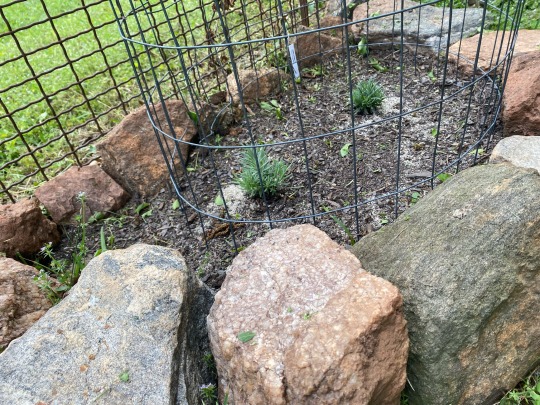
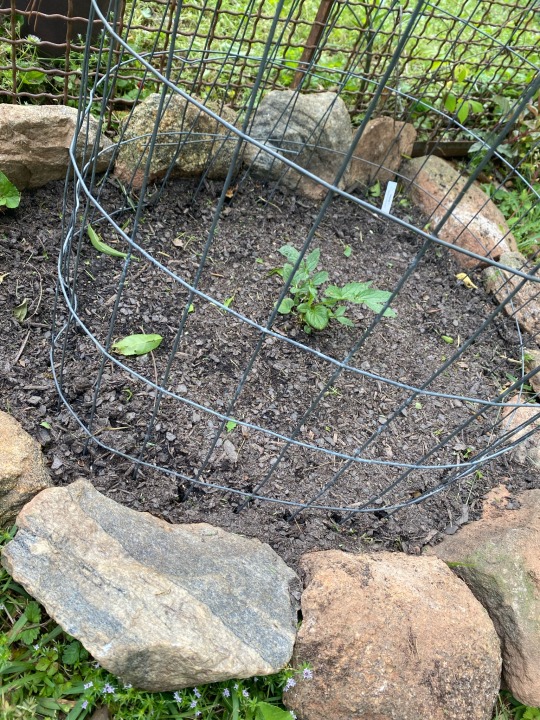
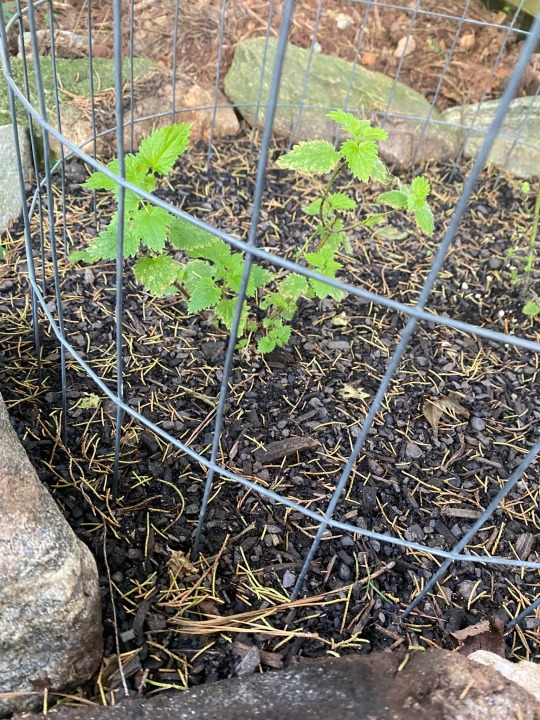
It took three different days over the course of about three weeks to get them all planted… but!! I’m very happy with myself that I did something like this by myself! I used rocks that were piled under the cypress tree to make a nice looking edge and barrier for the herbs, and used some manure and organic garden soil inside the holes I dug and mixed up to ensure better growth (we have very clay rich soil where I live).
I’m planning to make tea with the Valerian and Stinging Nettles, and use the lavender for making beauty products like lotion, scented lip balm, etc. For Gotu Kola, I’m just planning to eat the leaves, it’s a great brain tonic!
I will keep the herbs’ growth updated with pictures as they grow bigger.
Here’s a picture of the English Lavender and Valerian, side by side, showing the rocks off better (the Gotu Kola is behind the Valerian).
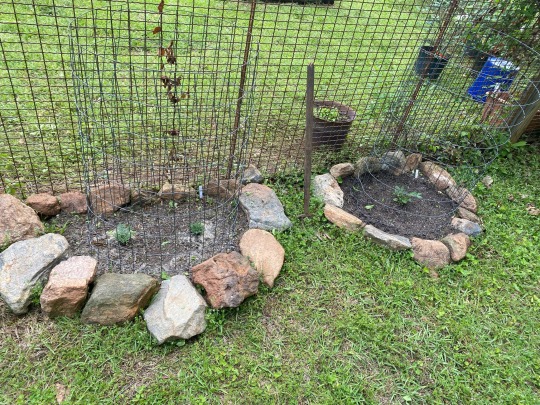
If you’re wondering why there’s wire around the plants, that’s because we have chickens who love to dust bathe in fresh dirt and scratch at roots!
That’s all for now!
#gardening#herbs#valerian#english lavender#stinging nettles#journal post#growing herbs#herb garden#Gotu Kola
1 note
·
View note
Text
How to Use Herbal Remedies
Introduction Herbal remedies have been used for centuries as a natural way to support health and wellness. This article will explore the benefits of herbal remedies, discuss common herbs and their therapeutic properties, and provide guidance on how to use them safely and effectively. Keep in mind, it’s essential to use herbal remedies responsibly and consult with a healthcare professional when…
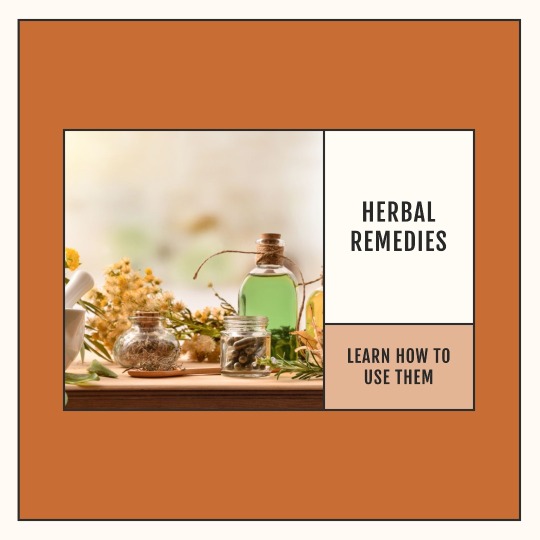
View On WordPress
#aromatherapy#capsules#chamomile#echinacea#essential oils#extracts#ginger#ginseng#growing herbs#harvesting herbs#herbal benefits#herbal health#herbal medicine#herbal remedies#herbalist#holistic health#infusions#lavender#natural medicine#peppermint#st. john&039;s wort#tablets#teas#tinctures#topical applications#turmeric
1 note
·
View note
Video
youtube
Sow and Grow: Cultivating Rosemary Seeds with Care🌱 Embark on an exciting adventure of plant magic in our latest video! 🌱 Discover the secrets of nurturing rosemary seeds in pots filled with nourishing soil, symbolizing new beginnings and growth. 🌼 As we delicately cover the seeds, envision the promise of green sprouts emerging to brighten your space and senses. 🌟
#youtube#youtube video#youtube views#youtubevideoes#video#videos#youtubeviews#gardening#gardening tips#gardening techniques#gardeningtherapy#seed#seeds#starting#seed starting#indoorgardening#grow#growin#growyourown#rosemary#herb#plants and herbs#herbs#growing herbs
5 notes
·
View notes
Text
La huertita de hierbas para quienes no tienen mucho espacio 💚🍀

Garden
#herb garden#herbs#growing herbs#magical garden#micro garden#urban homesteading#mini homestead#herbalism#small scale herbalism
53 notes
·
View notes
Text

Star Wars + Moodboards
Codywan: Desert Husbands
#codywan#commander Cody#tcw commander cody#Codywan au#obi-wan kenobi#obi wan kenobi#Star Wars#sw the clone wars#star wars the clone wars#tcw#sw tcw#tcw cody#star wars moodboard#mine#I really wanted include pics of like a little kitchen and pantry area#and a little garden (&/or indoor garden) that obi wan would use the Force to grow food and herbs and tea leaves and stuff#but i couldnt find ones quite like i envisioned plus it ended up making things look too cluttered alas#oops ok fixed the link
983 notes
·
View notes